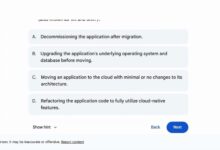AWS Console Login: 7 Ultimate Steps to Master Secure Access
Accessing your AWS resources starts with one crucial step: the AWS console login. Whether you’re a developer, sysadmin, or cloud architect, knowing how to securely and efficiently log in is essential for managing your cloud infrastructure with confidence and control.
Understanding AWS Console Login: The Gateway to Cloud Control

The AWS Management Console is a web-based interface that allows users to interact with Amazon Web Services (AWS) using a graphical user interface. The aws console login process is your first step toward managing EC2 instances, S3 buckets, Lambda functions, and hundreds of other cloud services. It’s not just about entering a username and password—it’s about identity, access, and security from the very first click.
What Is the AWS Management Console?
The AWS Management Console is a centralized dashboard that provides access to all AWS services. After a successful aws console login, users can view, configure, and monitor their cloud environment. It’s designed for ease of use, offering intuitive navigation, service search, and real-time metrics.
- Available at https://aws.amazon.com/console/
- Supports over 200 AWS services
- Accessible from any modern web browser
“The AWS Console is the control center for your cloud operations—secure access is non-negotiable.” — AWS Security Best Practices Guide
Why Is AWS Console Login Important?
The aws console login is more than just a gateway—it’s the foundation of your cloud security posture. Every login attempt represents a potential entry point for threats if not properly secured. A compromised login can lead to data breaches, unauthorized resource usage, or even ransomware attacks.
- Centralized access to critical infrastructure
- First line of defense against unauthorized access
- Enables audit trails and monitoring via AWS CloudTrail
Who Uses the AWS Console?
Different roles within an organization use the AWS console for various purposes:
- Developers: Deploy applications, manage databases, and configure APIs
- System Administrators: Monitor server health, manage IAM policies, and troubleshoot issues
- Security Teams: Audit access logs, enforce compliance, and respond to threats
- Finance & Governance: Track usage, set budgets, and manage cost allocation
Step-by-Step Guide to AWS Console Login
Performing a successful aws console login involves several key steps. Whether you’re logging in as the root user or using an IAM role, understanding the process ensures smooth and secure access.
Step 1: Navigate to the AWS Sign-In Page
Open your preferred web browser and go to the official AWS sign-in URL: https://aws.amazon.com/console/. Always ensure you’re on the legitimate AWS domain to avoid phishing attacks.
- Bookmark the official login page
- Avoid clicking login links from emails
- Check for HTTPS and the AWS logo
Step 2: Choose Your Account Type
AWS offers two primary login paths:
- Root Account: The original account created when setting up AWS. Avoid using this for daily tasks.
- IAM User: A user created under Identity and Access Management (IAM) with specific permissions.
Select “IAM user” if you’re not the account owner. Enter your account ID or alias, username, and password.
Step 3: Enable Multi-Factor Authentication (MFA)
After entering your credentials, if MFA is enabled, you’ll be prompted to enter a time-based one-time password (TOTP) from your authenticator app or hardware token.
- Supported apps: Google Authenticator, Authy, Microsoft Authenticator
- Hardware tokens: YubiKey, FIDO2 security keys
- Virtual MFA devices available in AWS IAM
“Enabling MFA reduces the risk of account compromise by up to 99%.” — AWS Security Blog
Common AWS Console Login Issues and How to Fix Them
Even experienced users encounter login problems. Understanding common issues helps reduce downtime and frustration during the aws console login process.
Incorrect Username or Password
This is the most frequent login error. Causes include:
- Typographical errors in username or password
- Using the root email instead of account ID for IAM login
- Case-sensitive password mistakes
Solution: Double-check your inputs. Use the “Forgot Password?” link if applicable. Remember, IAM users log in with their username, not email.
Account Locked Due to Failed Attempts
AWS temporarily locks accounts after multiple failed login attempts to prevent brute-force attacks.
- Wait 15–30 minutes before retrying
- Contact AWS Support if the lock persists
- Ensure MFA is correctly configured to avoid repeated failures
MFA Authentication Failure
If your MFA code isn’t accepted, check:
- Device time synchronization (TOTP codes are time-sensitive)
- Correct MFA device linked to your IAM user
- Whether the MFA was deactivated or deleted
Resync your virtual MFA device via the AWS IAM console if needed.
Best Practices for Secure AWS Console Login
Security should be the top priority during every aws console login. Implementing best practices protects your data, applications, and reputation.
Never Use the Root Account for Daily Tasks
The root account has unrestricted access to all resources and billing information. AWS strongly advises against using it for routine operations.
- Create IAM users with least-privilege permissions
- Use the root account only for account-level actions (e.g., changing support plans)
- Enable MFA on the root account immediately
Enforce Multi-Factor Authentication (MFA)
MFA adds a second layer of verification, making unauthorized access significantly harder.
- Require MFA for all IAM users with console access
- Use conditional access policies to enforce MFA based on IP location or device
- Integrate with SSO solutions like AWS Single Sign-On (SSO)
Use Strong Password Policies
AWS allows you to define password policies under IAM to enforce complexity and rotation.
- Minimum 12 characters
- Require uppercase, lowercase, numbers, and symbols
- Enforce password rotation every 90 days
- Prevent password reuse
“A strong password policy is the first line of defense in cloud security.” — NIST Guidelines
Using AWS Single Sign-On (SSO) for Centralized Login
For organizations managing multiple AWS accounts, AWS SSO provides a unified way to manage access across accounts and applications.
What Is AWS SSO?
AWS Single Sign-On is a service that enables users to log in once and access multiple AWS accounts and business applications. It integrates with existing identity providers like Microsoft Active Directory or SAML 2.0-compliant systems.
- Centralized user management
- Support for SCIM provisioning
- Integration with third-party apps (e.g., Salesforce, Office 365)
Learn more at AWS SSO Official Page.
How AWS SSO Enhances Console Login
Instead of managing individual IAM users across accounts, AWS SSO allows administrators to assign permissions sets and group-based access.
- Users access the AWS console via the SSO portal
- No need to remember multiple usernames or passwords
- Automatic deprovisioning when employees leave
Setting Up AWS SSO: A Quick Overview
To configure AWS SSO:
- Go to AWS SSO in the AWS Console
- Connect your identity source (e.g., AWS SSO directory or external IdP)
- Create permission sets (equivalent to IAM roles)
- Assign users or groups to AWS accounts
After setup, users visit https://portal.awsapps.com/ to log in.
Programmatic Access vs. Console Login
While the aws console login is ideal for visual management, many tasks are better handled programmatically using AWS CLI, SDKs, or Infrastructure as Code (IaC) tools.
Differences Between Console and Programmatic Access
Understanding the distinction helps you choose the right access method:
- Console Login: GUI-based, ideal for exploration, troubleshooting, and one-time tasks
- Programmatic Access: API-driven, used for automation, CI/CD pipelines, and scripting
Both require secure credentials, but the format differs.
Using Access Keys for Programmatic Access
IAM users can generate access keys (Access Key ID and Secret Access Key) for use with AWS CLI or SDKs.
- Never embed access keys in code
- Rotate keys every 90 days
- Use IAM roles for EC2 instances instead of keys
Access keys do not grant console access—they are only for API calls.
Securing Programmatic Credentials
To protect programmatic access:
- Store keys in AWS Secrets Manager or Parameter Store
- Use temporary credentials via IAM roles and STS (Security Token Service)
- Enable AWS CloudTrail to monitor API activity
“Temporary credentials reduce the risk of long-term exposure.” — AWS Well-Architected Framework
Monitoring and Auditing AWS Console Login Activity
Visibility into who logs in, when, and from where is critical for security and compliance. AWS provides tools to track every aws console login attempt.
Using AWS CloudTrail for Login Logging
AWS CloudTrail records all management events, including console logins. The ConsoleLogin event is logged for every successful or failed attempt.
- Logs include source IP, user agent, and MFA status
- Events are stored in S3 buckets for long-term retention
- Can be analyzed using Amazon Athena or CloudWatch Logs
Enable CloudTrail in all regions for comprehensive coverage.
Setting Up Alerts for Suspicious Logins
Use Amazon CloudWatch to create alarms based on CloudTrail events.
- Alert on failed login attempts from unusual locations
- Trigger notifications for root account logins
- Monitor for MFA bypass attempts
Example: Create a CloudWatch Events rule that triggers an SNS notification when a ConsoleLogin event fails and originates from a foreign country.
Generating Login Reports with AWS IAM Access Analyzer
IAM Access Analyzer helps identify unintended access to resources, including console access patterns.
- Identifies external users with console access
- Highlights unused or overprivileged accounts
- Generates findings for remediation
Regularly review Access Analyzer reports to tighten security.
Advanced Tips for Power Users
For teams managing complex environments, optimizing the aws console login experience can boost productivity and reduce errors.
Customizing the AWS Console Dashboard
After login, users can personalize their console homepage:
- Add frequently used services to the favorites bar
- Pin important metrics to the dashboard
- Use AWS Console Mobile App for on-the-go access
Customization reduces navigation time and improves workflow efficiency.
Using AWS CLI with Console Sessions
While not a direct part of aws console login, you can generate temporary CLI credentials after logging in via the console.
- Use AWS Session Manager for secure EC2 access
- Generate temporary tokens using STS
GetSessionToken - Integrate with SSO to get CLI access via
aws sso login
This bridges the gap between GUI and command-line workflows.
Browser and Device Best Practices
Your login security also depends on your local environment.
- Use up-to-date browsers (Chrome, Firefox, Edge)
- Avoid public or shared computers for aws console login
- Clear cookies and cache after sensitive sessions
- Enable browser password managers only with MFA
How do I log in to the AWS console?
Navigate to https://aws.amazon.com/console/, select your account type (root or IAM user), enter your credentials, and complete MFA if enabled.
What should I do if I forget my AWS console password?
If you’re an IAM user, click “Forgot Password?” on the login page. Root users can reset their password via the AWS account recovery process at AWS Account Password Reset.
Can I use single sign-on (SSO) for AWS console login?
Yes. AWS SSO allows users to log in once and access multiple AWS accounts and applications. It integrates with identity providers like Active Directory and supports SAML 2.0.
Why is MFA important for AWS console login?
MFA adds an extra layer of security by requiring a second form of authentication, drastically reducing the risk of unauthorized access even if credentials are compromised.
How can I monitor AWS console login attempts?
Use AWS CloudTrail to log all ConsoleLogin events. Combine with Amazon CloudWatch to set up alerts for suspicious activity, such as failed logins or root account access.
Mastering the aws console login process is essential for anyone working with AWS. From understanding the basics to implementing advanced security measures like MFA, SSO, and CloudTrail monitoring, every step contributes to a more secure and efficient cloud experience. By following best practices—avoiding root usage, enforcing strong passwords, and auditing access—you protect your infrastructure and ensure smooth operations. Whether you’re a beginner or a seasoned pro, continuous learning and vigilance are key to maintaining control in the cloud.
Recommended for you 👇
Further Reading:









